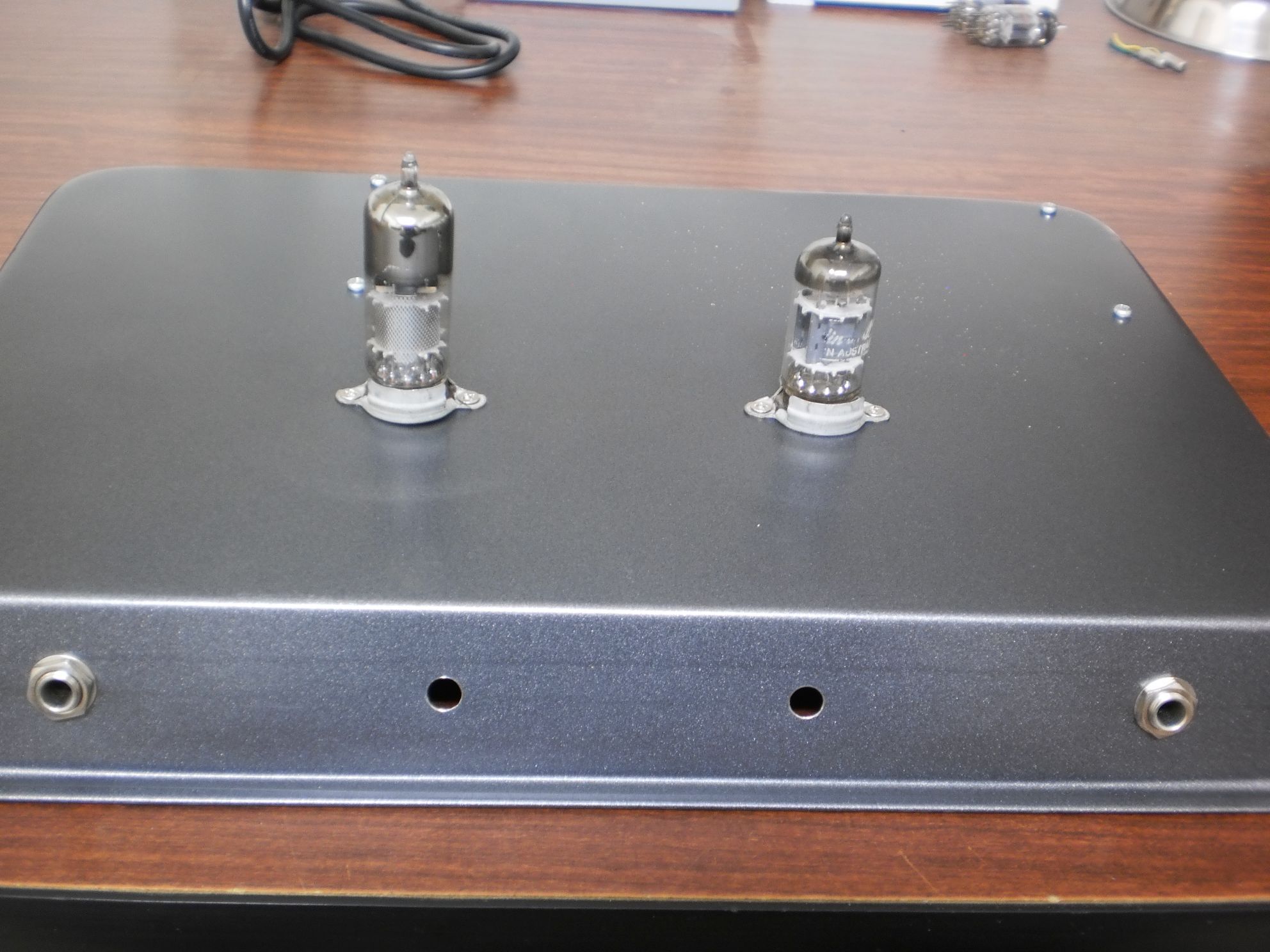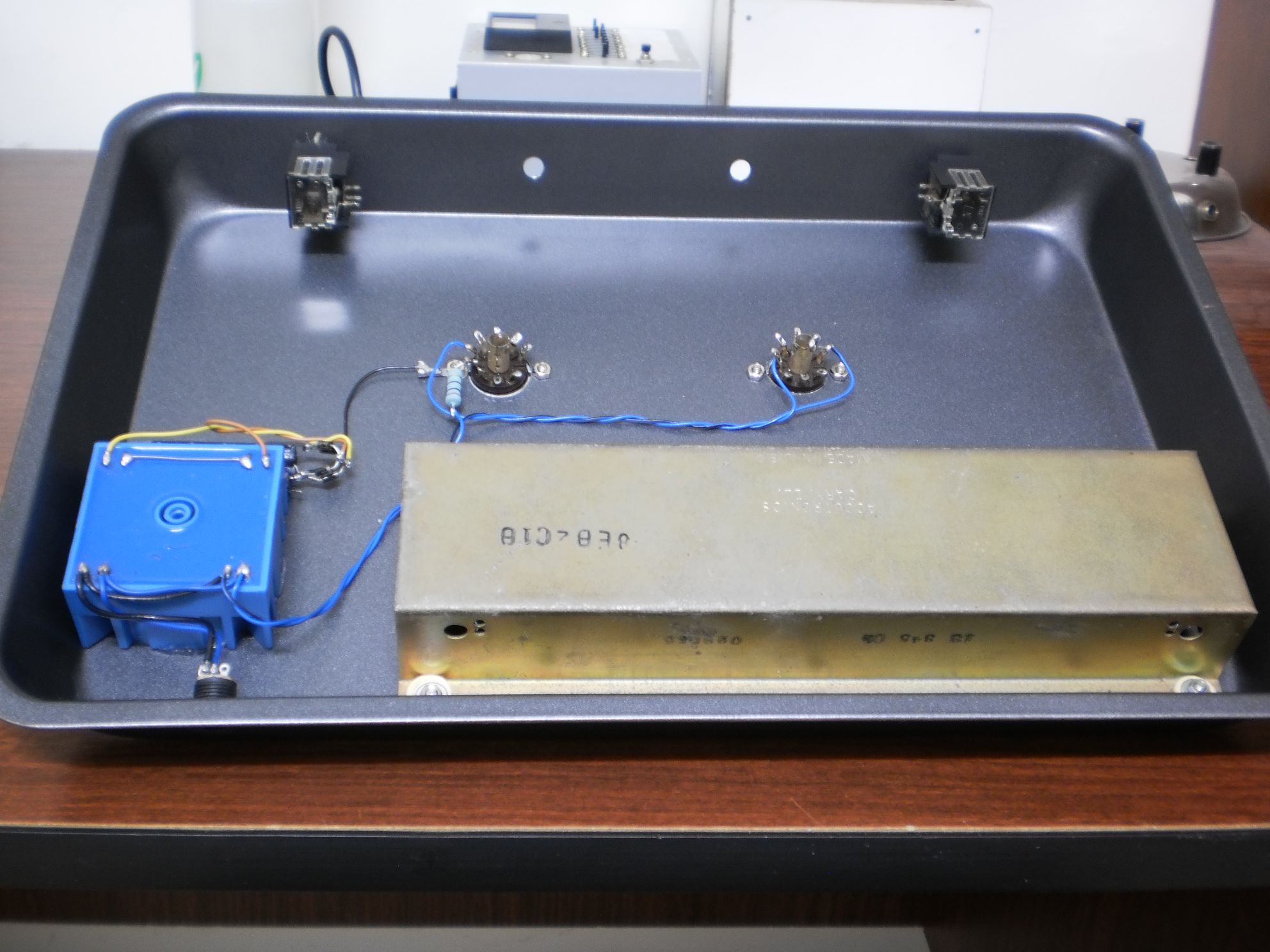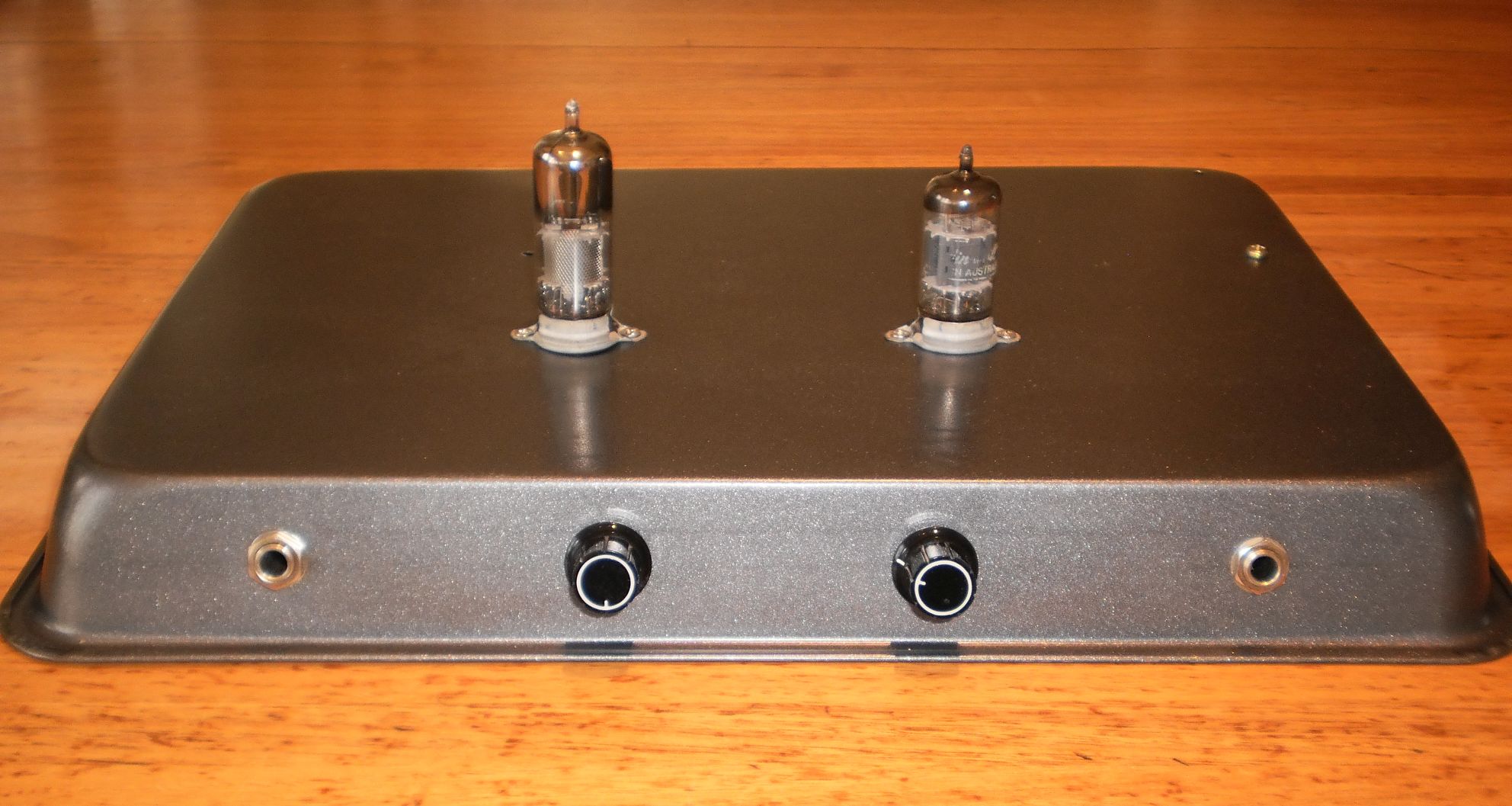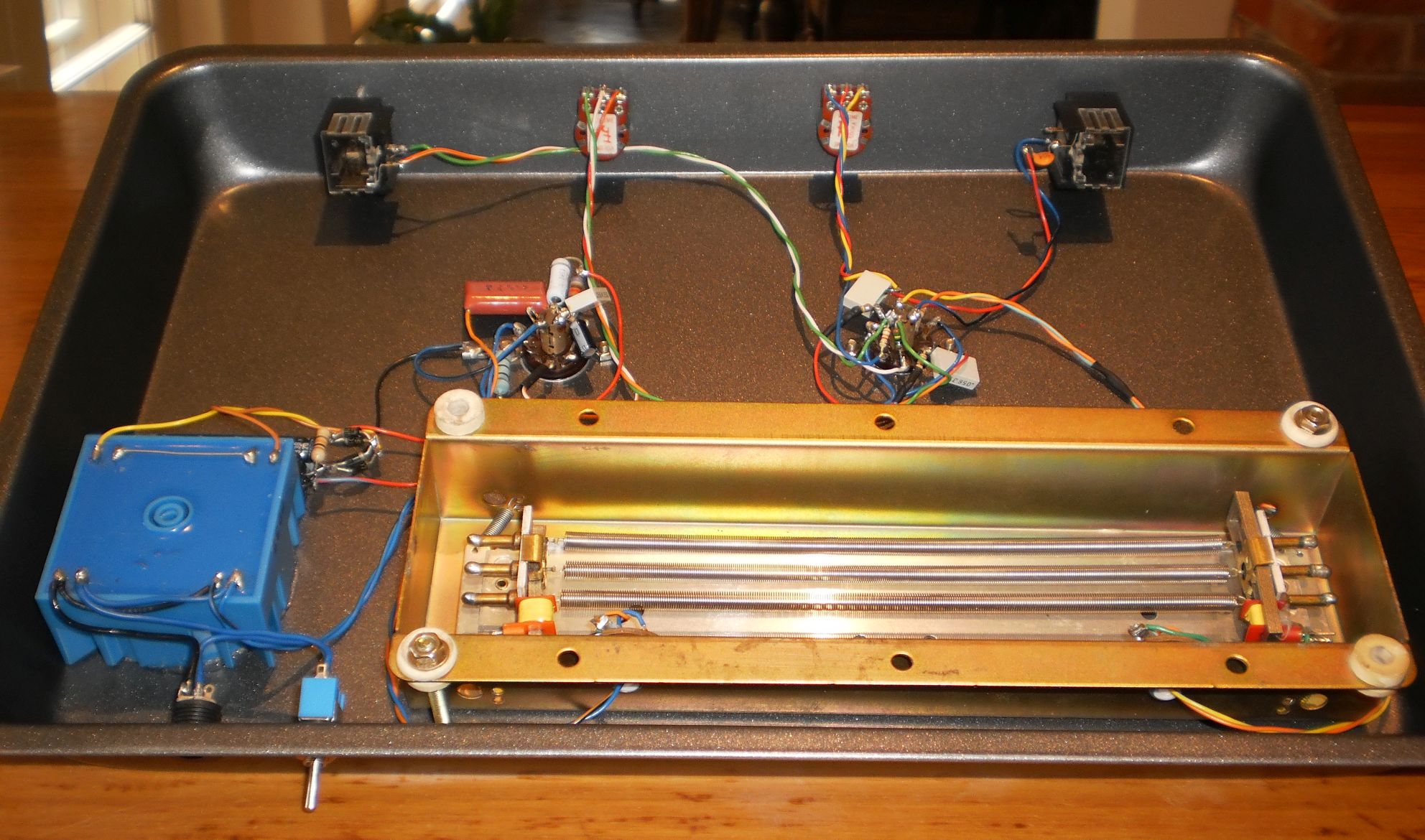I have been kicking around the idea of a “Lamington” stand alone spring reverb unit for a while, and recently began a build.
The inspiration for the design came from a Channel Road Amplification tech paper found here: http://www.channelroadamps.com/articles/reverb_driver/
Driving a reverb spring tank presents some challenges. The commonly used driver circuit drives a low impedance tank via a small transformer. While this works, it provides constant voltage drive which is not the best way to drive a spring tank. It results in poor high frequency response due to the inductive nature of the drive coil. A much better way to drive a tank is with a constant current drive circuit. This results in a wide band response from the tank.
Inspired by the Channel Road paper, I looked at building a stand alone reverb unit. Using a high impedance tank and a constant current pentode driver that eliminates the drive transformer, it is possible to build a simpler (and superior) spring reverb unit . In addition, a plugpack power supply similar to the one used in the Lamington Junior amp can be used to simplify the power supply and make it a cheap build.
More details to come!
Some progress – the chassis was prepared with holes for the controls, valves and spring tank. As mentioned, a 12V plugpack supplies power to the valve heaters and a toroidal transformer steps up the 12V AC to generate the HT for the valves.
An Accutronics 8EB2C1B spring tank was at hand and is ideal for this build with an 800 ohm drive impedance. These tanks are readily available as a spare for the Fender Blues Junior amp both here in Australia and O/S.
Have now completed the Lamington Reverb and pretty happy with it. Firstly, a photo of the finished reverb unit.
From left to right: input, dwell, mix controls and output.
Also visible is the 6BX6 tank drive valve and a 12AX7 preamp and recovery valve.
And an underside photo. Not a lot to it – a 12V to 240V toroidal transformer, the reverb tank, and some components clustered around the valve sockets. You can click on the image for more detail.
Here is the schematic for the Lamington Reverb. You can click on the image for more detail.
It is a simple circuit, but works well.
The input signal is fed to the first gain stage with the dry signal fed straight to the MIX control from the cathode. This first stage drives the current source pentode via the DWELL control. This determines how hard the tank is driven and changes the reverb tone as a result. As discussed, the tank drive circuit is taken from the Channel Road paper and provides current drive directly to the tank eliminating a drive transformer. The tank used in the prototype is an Accutronics 8EB2C1B which is used in the Fender Blues Jnr and is readily available here in Australia and overseas. Its drive coil impedance is 800ohm and is ideal for the constant current driver which is a commonly available 6BX6 (EF80). The output of the spring tank is fed to the other half of the 12AX7 input triode and the output of this valve is fed to the mix control and output socket.
The power supply is a simple arrangement using a 12V 1A plugpack which feeds the heaters and a second transformer which steps up the 12V to a high voltage for the valve HT.
Some construction details to come.
Some comments on constructing the Lamington Reverb.
If you are using an EI step up transformer, I suggest waiting before mounting it. With some extension leads on the transformer, move it around to find the position that induces the least amount of hum and mount it there.
You may note that I have used fairly large values of HT filter caps for the prototype. This was necessary to eliminate any HT hum from being introduced into the unit.Re suitable valves for the Lamington Reverb, the 12AX7 is readily available. The 6BX6 is no longer manufactured, but was used by the squillions in the day in B/W TV sets. It can be substituted with about any RF pentode such as the 6AU6, 6EJ7, 6ET6, 6CB6, EF94 etc
The Accutronics 8EB2C1B reverb tank is readily available from Evatco here in Australia or from Ebay. You may wish to use a longer tank which would work fine in this unit as long as it has a high impedance (600 or 800ohm) drive coil.Re the transformers, the plugpack is a 240V to 12V1A AC unit. The stepup transformer I used is a 10VA 240V to 12V toroidal transformer wired backwards. Just about any low power 240V to 12V transformer could be used – just check its location with respect to the reverb tank as mentioned to minimise hum.
So overall, I have been very happy with the Lamington Reverb – it sounds very lush with no unwanted noise and hum. The ability to vary the drive to the tank with the dwell control is an added bonus to change the character of the reverb tone.





